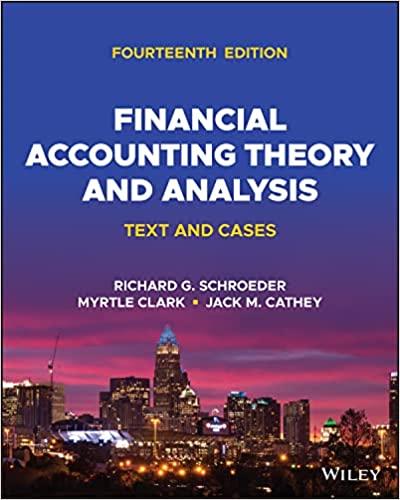1. Typical balance sheet classifications are as follows. a. Current Assets B. Long-Term Liabilities b. Investments h. Capital Stock c. Plant Assets i. Additional Paid-In Capital d. Intangible Assets f. Retained Earnings e. Other Assets k. Notes to Financial Statements f. Current Liabilities l. Not Reported on Balance Sheet Indicate by use of the above letters how each of the following items would be classified on a balance sheet prepared at December 31,2025 . If a contra account, or any amount that is negative or opposite the normal balance, put parentheses around the letter selected. A letter may be used more than once or not at all. 1. Accrued salaries and wages 2. Rent revenues for 3 months collected in advance 3. Land used as plant site 4. Equity securities classified as trading 5. Cash 6. Interest payable due in 30 days 7. Paid-in capital in excess of par 8. Dividends in arrears on preferred stock 9. Petty cash fund 10. Unamortized discount on bonds payable due 2025 11. Common stock at par value 12. Bond indenture covenants 13. Unamortized premium on bonds payable due in 2029 14. Allowance for doubtful accounts 15. Accumulated depreciation-equipment 16. Natural resource-timberlands 17. Deficit (no net income earned since beginning of company) 18. Goodwill 19. 90 day notes payable 20. Investment in bonds of another company; will be held to 2026 maturity 21. Land held for speculation 22. Death of company president 23. Current maturity of bonds payable 24. Investment in subsidiary; no plans to sell in near future 25. Accounts payable 26.Preferred stock ( $10 par) 27. Prepaid rent 28. Copyright 29. Accumulated amortization, patents 30. Earnings not distributed to stockholders 1. Typical balance sheet classifications are as follows. a. Current Assets B. Long-Term Liabilities b. Investments h. Capital Stock c. Plant Assets i. Additional Paid-In Capital d. Intangible Assets f. Retained Earnings e. Other Assets k. Notes to Financial Statements f. Current Liabilities l. Not Reported on Balance Sheet Indicate by use of the above letters how each of the following items would be classified on a balance sheet prepared at December 31,2025 . If a contra account, or any amount that is negative or opposite the normal balance, put parentheses around the letter selected. A letter may be used more than once or not at all. 1. Accrued salaries and wages 2. Rent revenues for 3 months collected in advance 3. Land used as plant site 4. Equity securities classified as trading 5. Cash 6. Interest payable due in 30 days 7. Paid-in capital in excess of par 8. Dividends in arrears on preferred stock 9. Petty cash fund 10. Unamortized discount on bonds payable due 2025 11. Common stock at par value 12. Bond indenture covenants 13. Unamortized premium on bonds payable due in 2029 14. Allowance for doubtful accounts 15. Accumulated depreciation-equipment 16. Natural resource-timberlands 17. Deficit (no net income earned since beginning of company) 18. Goodwill 19. 90 day notes payable 20. Investment in bonds of another company; will be held to 2026 maturity 21. Land held for speculation 22. Death of company president 23. Current maturity of bonds payable 24. Investment in subsidiary; no plans to sell in near future 25. Accounts payable 26.Preferred stock ( $10 par) 27. Prepaid rent 28. Copyright 29. Accumulated amortization, patents 30. Earnings not distributed to stockholders







